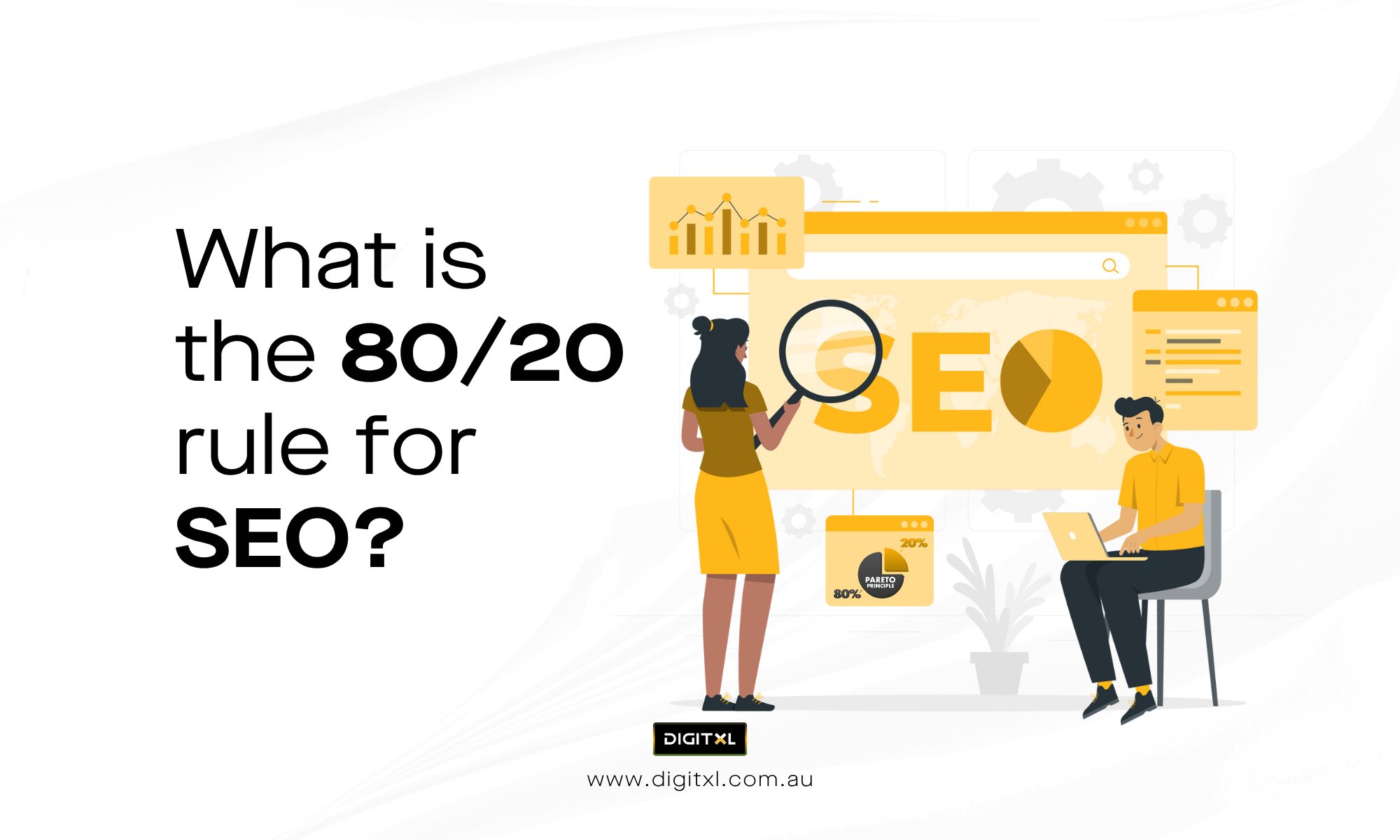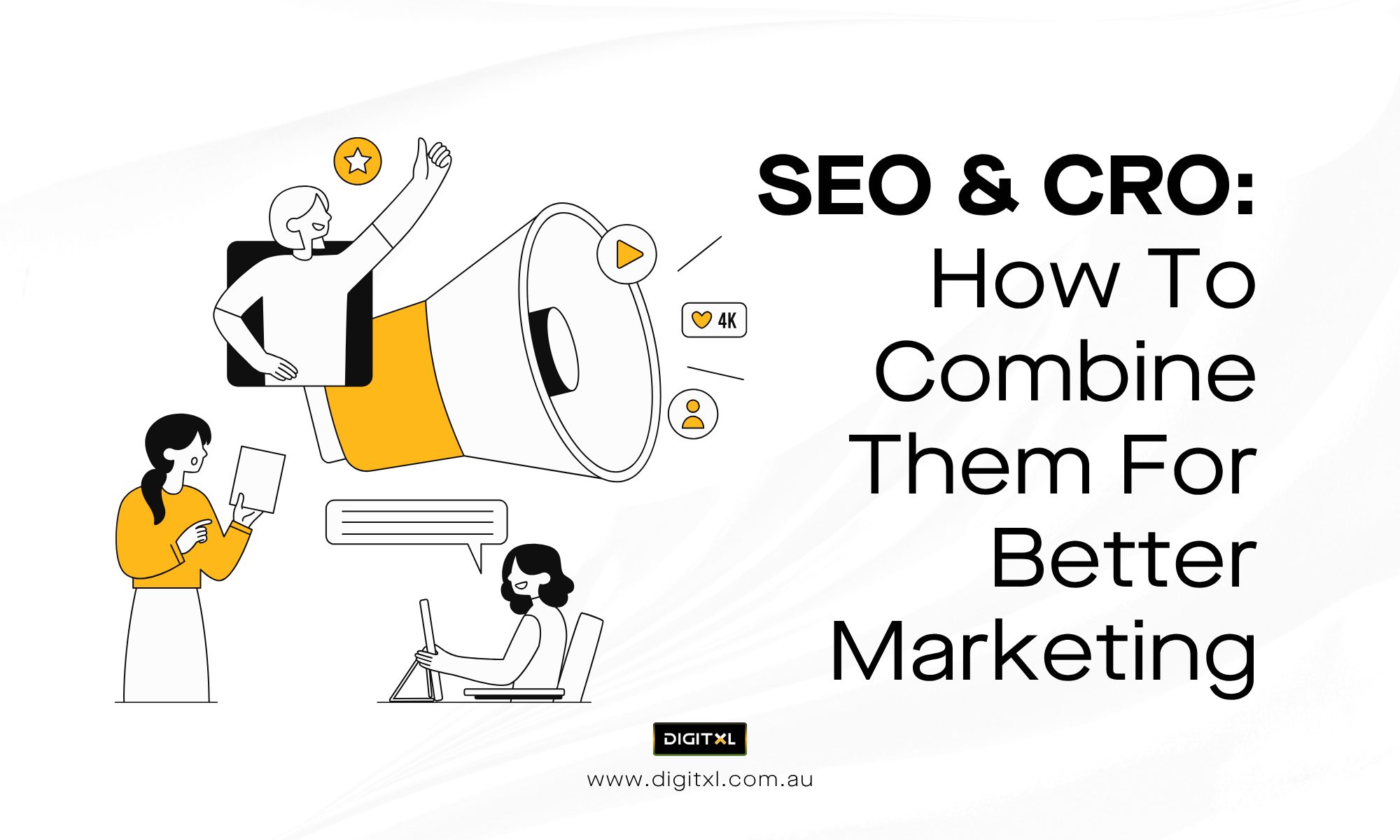- CRO
UX/UI Design and Its Role in CRO (Clear Guide with Examples & Tips)
30 Sep 2025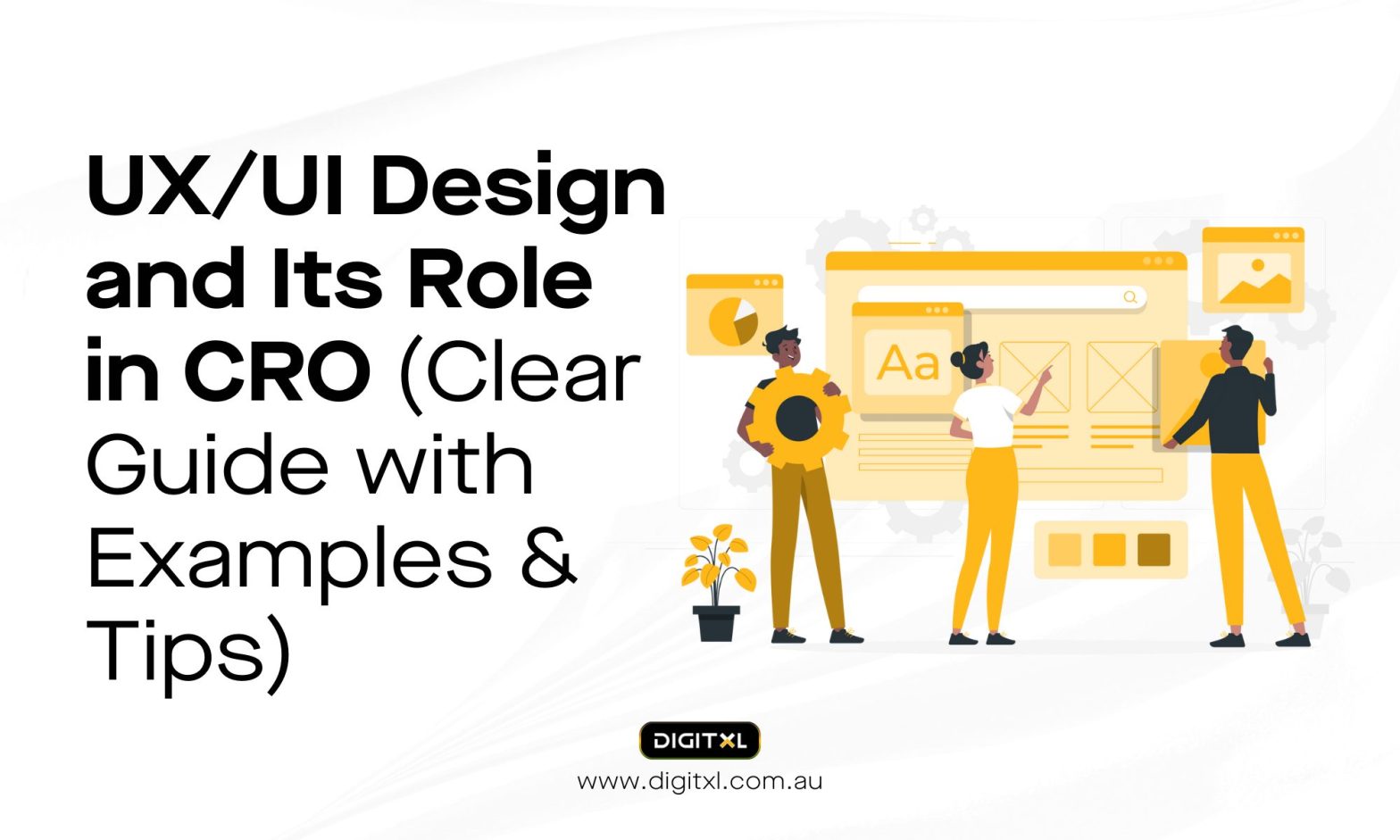
Quick answer:
UX/UI design shapes how visitors feel and behave on your site. Done well, it reduces friction, builds trust, and makes next steps obvious lifting conversions without extra ad spend. That’s why UX Design for Conversion Rate Optimisation (CRO) matters and why many teams partner with a specialist CRO agency to turn UX insights into real revenue.
1. What do we mean by UX, UI, and CRO?
- UX (User Experience): The overall journey like navigation, clarity, speed, trust, accessibility.
- UI (User Interface): The visual layer such as layout, typography, colour, buttons, spacing, micro-interactions.
- CRO (Conversion Rate Optimisation): A methodical way to increase the percentage of visitors who complete a desired action (buy, enquire, book, sign up).
How UX design affects CRO: UX removes confusion and effort. When people instantly understand where they are, what’s on offer, and how to act, conversions climb. That’s UX Design’s Role in CRO in one sentence.
2. Why UX/UI is the quiet engine behind conversions
- Clarity lowers bounce. Clear page purpose and scannable content keep people on the path.
- Speed keeps intent alive. Faster loads = fewer drop-offs (especially on mobile).
- Confidence builds action. Trust signals (reviews, guarantees, policies) reduce hesitation.
- Focus beats clutter. One strong call-to-action per step avoids decision fatigue.
- Accessibility widens reach. Keyboard nav, contrast, and semantic structure help everyone (and help SEO).
Tip: Treat UX improvements like compounding interest. Small wins across forms, menus, copy, and layout add up to big CRO gains.
3. UX vs UI in the conversion moment (with examples)
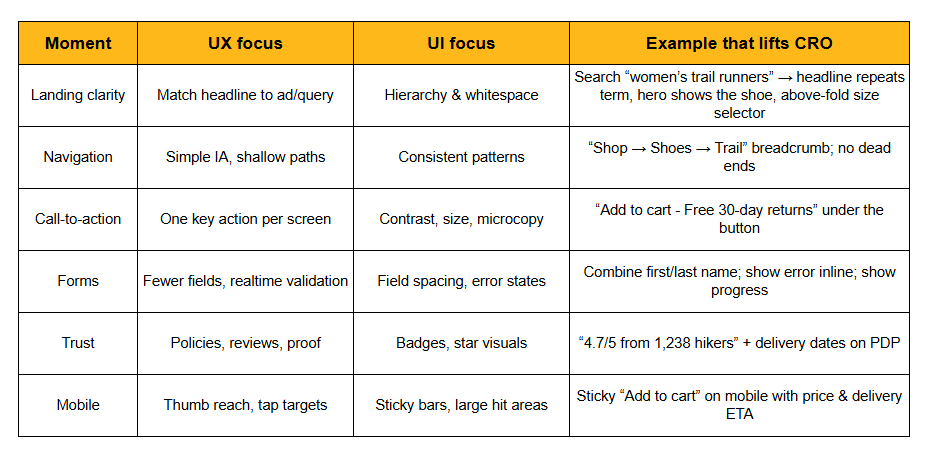
4. A simple CRO workflow grounded in UX
- Research: Heuristics review, analytics, scroll/click maps, session replays, voice-of-customer.
- Diagnose: Pinpoint friction (e.g., field errors, slow steps, unclear value).
- Hypothesise: “If we do X for audience Y on page Z, conversion to goal G will improve because…”
- Prioritise: ICE/PIE scoring, tackle high-impact, low-effort items first.
- Experiment: A/B test copy, layout, order, proof, offers, micro-interactions.
- Ship & learn: Keep winners, re-test losers, document insights.
This is the core of CRO Services offered by any good CRO agency / conversion rate optimisation agency.
5. High-impact UX changes that often lift conversions
- Above-the-fold purpose: One headline that matches intent, one benefit line, one CTA.
- Friction-free forms: Only essential fields, inline validation, autofill, plain-English errors.
- Delivery & returns up front: Put shipping dates, costs, and returns near the CTA (don’t hide them).
- Price understanding: Break down total cost, show savings, clarify payment options.
- Social proof where it counts: Ratings/reviews near CTAs; show real names and use-cases.
- Performance basics: Core Web Vitals, image compression, lazy load below fold, font strategy.
- Accessibility basics: Colour contrast, focus states, descriptive labels/alt text.
Mobile ergonomics: Sticky primary CTA, bottom-placed actions, large tap targets.
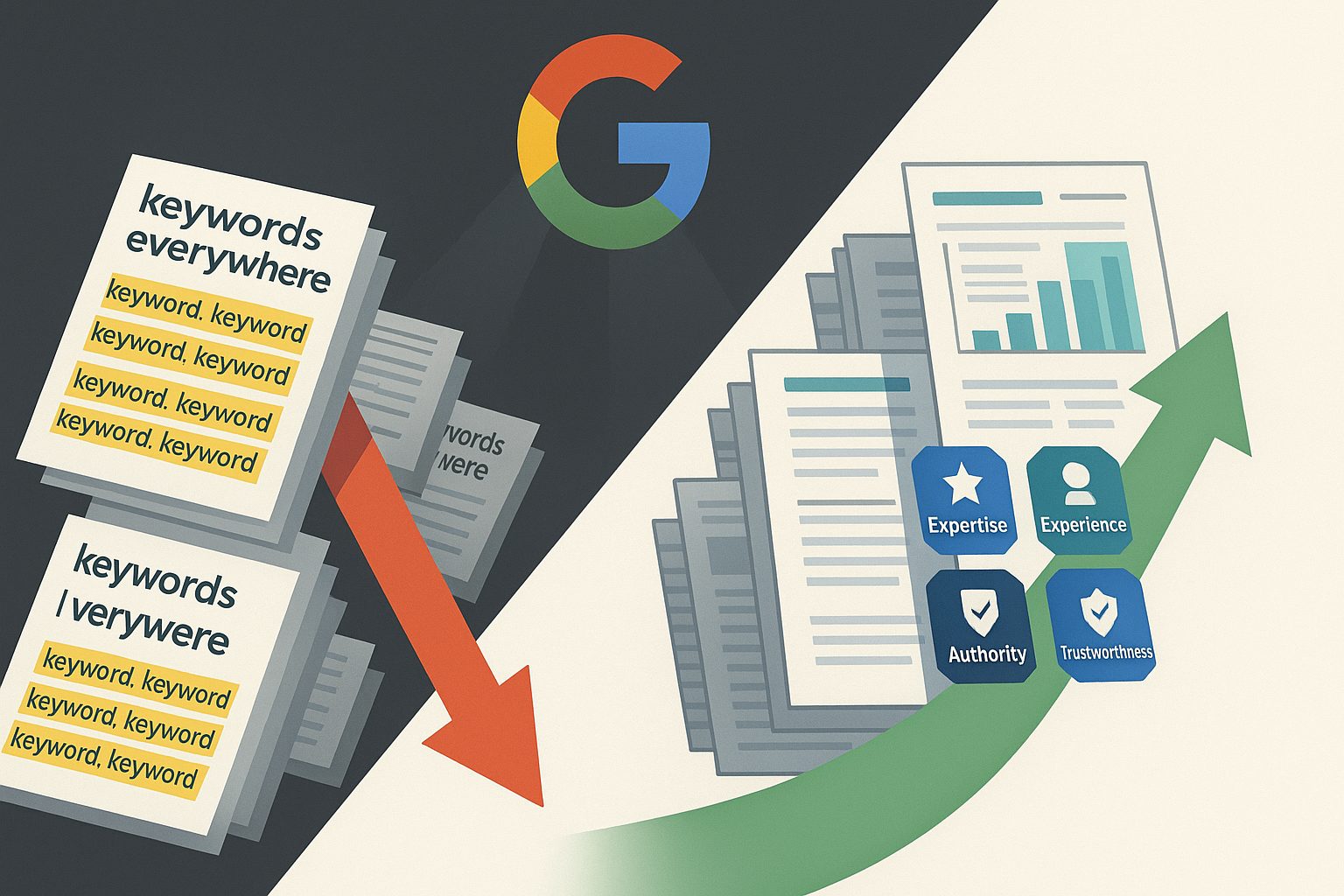
6. Measuring UX impact on CRO (what to track)
-
- Primary: Conversion rate, revenue per visitor, lead submission rate, add-to-cart rate.
- Journey: Step-to-step completion, form completion rate, error rate per field, scroll depth.
- Quality: Bounce rate, time to first interaction, task success in usability tests.
- Speed: LCP, INP, CLS (Core Web Vitals).
Keep tests running long enough for significance. Document every result (win or learn).
7. When to bring in a partner
- If you’re short on time, traffic, or in-house testing muscle, a conversion rate optimisation service can help with structured research, test design, dev QA, and clean analysis. A seasoned conversion rate optimisation agency will slot into your cadence and bring a tested playbook so you don’t stall between ideas and implementation.(If you need recommendations or help, say the word.)
8. Final word
Great UX Design for Conversion Rate Optimis ation (CRO) is removing friction and making decisions easy. If you’d like a hand from a CRO agency that delivers practical CRO services, we can help you turn UX insights into measurable wins.
9. FAQ
1. How fast can UX changes move the conversion needle?
A. Quick wins (copy, hierarchy, trust placement) can lift metrics within weeks. Heavier lifts (navigation, templates) take longer but often deliver larger, lasting gains.
2. Do I need lots of traffic for CRO?
A. For formal A/B tests, yes. But you can still run usability tests, heuristic reviews, and ship “obvious” fixes guided by evidence even with modest traffic.
3. What matters more for CRO: UX or UI?
A. UX first (flow, clarity, speed), UI second (how it looks/feels). The best results come from both working together.
4. Is accessibility really a conversion lever?
A. Absolutely. Clear labels, keyboard nav, and readable contrast improve task success for everyone and reduce form errors and drop-offs.
5. How do I avoid “best practice” traps?
A. Use best practices as starters, not finish lines. Validate with your users and your data; keep what works for your audience.



